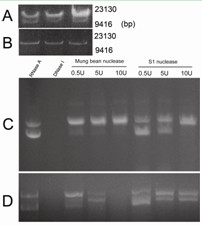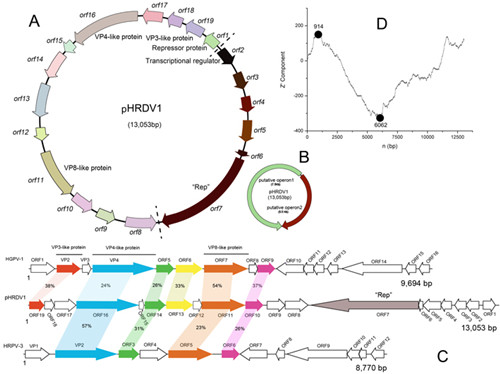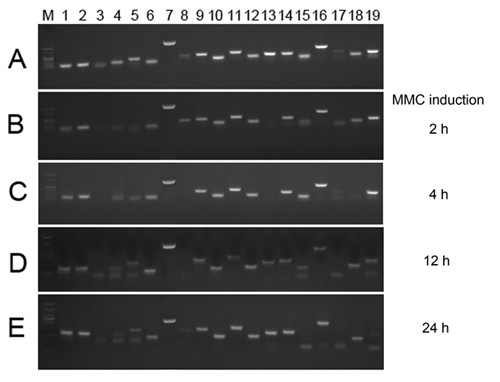Archaea lived in extreme environments (alkaline, acidic, extremely cold, extremely hot, hypersaline), represent one kind of special microorganisms. Haloarchaea belongs to the domain of Archaea, were widely distributed in hypersaline environments. It contains many applications in medicinal and bio-chemical industries. The researches on the halo-plasmid will pave the way for the exploitation and application of haloarchaeal resources, and resolving the process of horizontal gene transfer in hypersaline environments.
Dr. CHEN Shaoxing and colleagues from Prof. YANG Zhuliang Yang' group of Kunming Insitute of Botany, isolated a novel type of plasmid termed pHRDV1 (13,053 bp), from haloarchaea. Based on the sequenced genome, the plasmid was analyzed by bioinformatics prediction and molecular genetic characterization determination. Molecular and bioinformatics analyses showed that this element is a double-stranded circular DNA molecule containing two putative transcripts with opposite directions. The amino acid sequences of six of the nineteen predicted open reading frames were similar to those found in haloarchaeal pleomorphic viruses, such as Halorubrum pleomorphic virus 3 and Halogeometricum pleomorphic virus 1. There was also a strong conservation in gene order between the plasmid and these viruses. All three conserved viral proteins (VPs), which are characteristic of haloarchaeal pleomorphic viruses VP3, VP4 and VP8, were found in pHRDV1. Furthermore, a typical repressor-operator system similar to haloarchaeal myovirus phiCh1, was found on the genome of pHRDV1. However, no viral particles were detected in the supernatants of Halorubrum sp. T3, either in the presence or absence of mitomycin C. These results imply that plasmid pHRDV1 is a distinctive virus-like mobile genetic element that harbors some unique properties that make it different from all of the known haloarchaeal plasmids or viruses (http://link.springer.com/content/pdf/10.1007%2Fs00792-013-0599-4.pdf).
This work was supported by the CAS/SAFEA International Partnership Program for Creative Research Teams and the Hundred Talents Program of the Chinese Academy of Sciences (2010–2012).

FIG 1. Isolation and determination of plasmid pHRDV1.

FIG 2. Schematic diagram of the pHRDV1 genome.

FIG 3. Transcription patterns of plasmid pHRDV1 under MMC induction.




